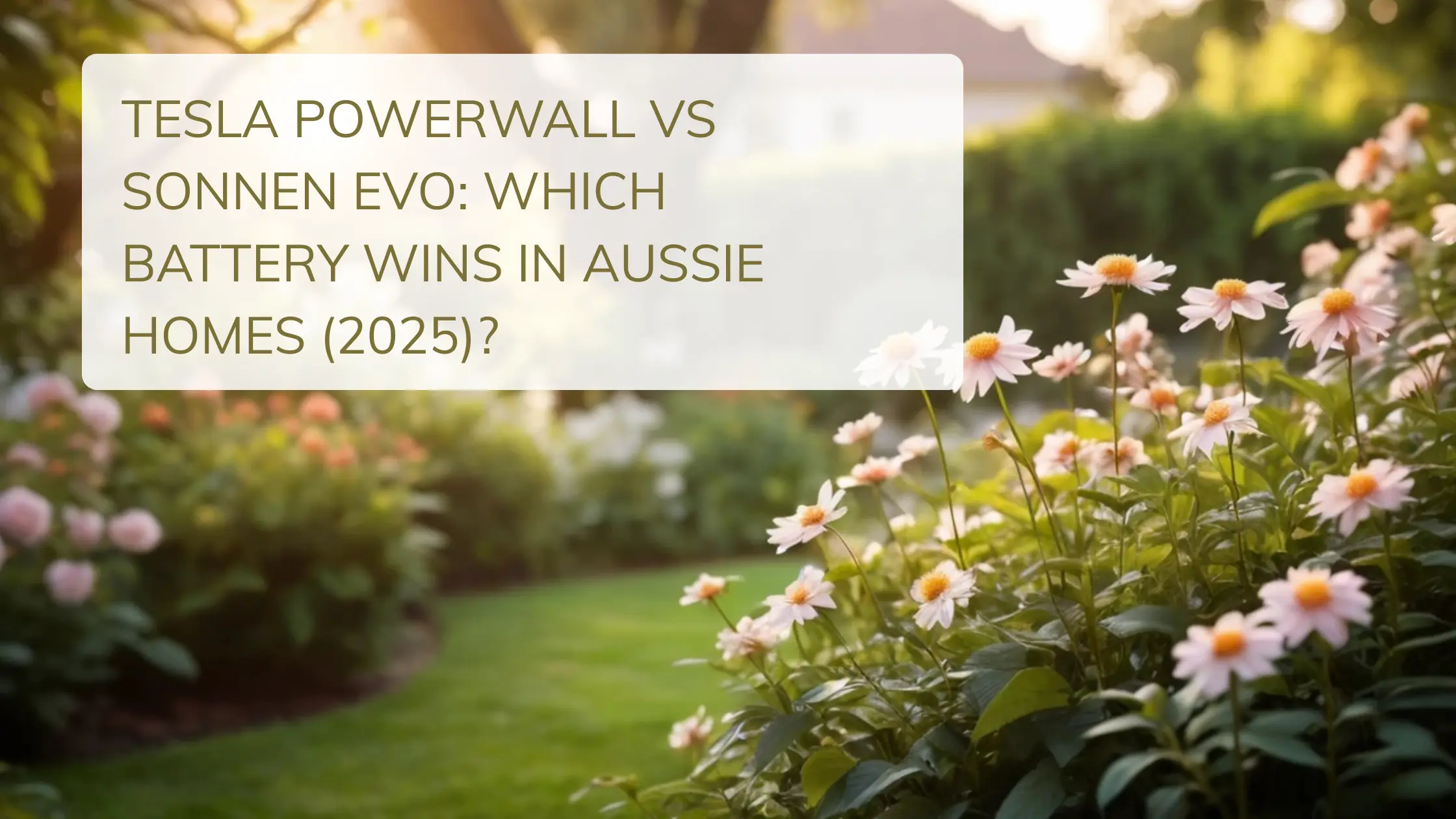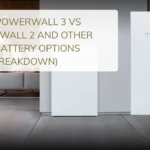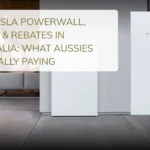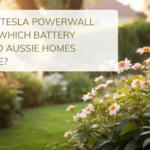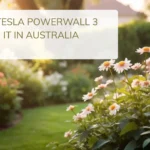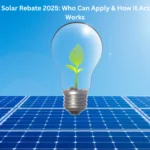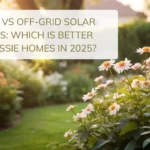Tesla Powerwall vs Sonnen Evo: Which Battery Wins in Aussie Homes (2025)?
If you’re weighing up solar battery options in 2025, you’re probably stuck on one big decision — Tesla Powerwall 3 or the Sonnen Evo? They’re the heavyweights right now in Aussie backyards, and depending on who you ask, you’ll get two very different answers.
I’ve spent the past few months getting quotes, reading forums, and chatting with folks who’ve had them installed. So here’s the no-fluff breakdown — with real-world numbers, pros and cons, and what it’s actually like to live with one of these batteries in an Aussie home.
Quick Overview: Tesla Powerwall 3 vs Sonnen Evo
Let’s start with the specs. Both are premium batteries, but they’ve got some key differences.
- Tesla Powerwall 3
- 13.5 kWh usable capacity
- Integrated solar inverter
- Up to 10 kW power output
- Can run large appliances (air con, EV chargers)
- Sleek design, app-integrated
- Sonnen Evo
- 10 kWh usable capacity (expandable)
- External inverter needed
- 3.3 kW continuous output
- Built in Germany, super durable
- 10-year or 10,000-cycle warranty
In simple terms — Tesla is more powerful, Sonnen is more conservative but tough as nails. But there’s more to it than specs.
Price Comparison
Here’s what I was quoted (Sydney, April 2025):
- Tesla Powerwall 3: $16,300 installed (including smart monitoring + backup switch)
- Sonnen Evo: $14,900 installed (but required separate Fronius inverter)
The Tesla price included everything, whereas the Sonnen quote had a few hidden extras — monitoring add-on, switchboard tweaks, and slightly more complex install.
In the end, the real-world difference was about $1,000–$1,400.
Why Sonnen Fans Swear by It
I visited a local family in the Blue Mountains — John and Lisa — who’ve had the Sonnen Evo since late 2023. Their main reason for choosing Sonnen? Reliability and eco-manufacturing.
“We liked the fact that Sonnen’s made in Germany, and it’s not just about performance — it’s built to last. Plus, the software is stable and doesn’t require weekly updates.”
They’ve got a 6.6 kW solar system, no EV, and use the battery mainly in the evening. Their power bill dropped from around $2,000/year to just under $500. Not bad.
Lisa added they’ve had zero issues — no reboots, no weird app glitches. She liked that it “just works.”
Why I Leaned Tesla (Despite My Doubts)
I was originally sold on Sonnen. The idea of a modular battery with a 10,000-cycle warranty sounds perfect, right? But when I ran the numbers on daily savings, the Tesla started pulling ahead.
We’re a high-usage household — induction cooktop, ducted heating, 2 fridges, plus an EV that drinks 10–12 kWh per night. Sonnen just couldn’t keep up. At 3.3 kW output, it’d barely handle the car charger and a few lights.
The Tesla? Powers everything at once. During a blackout test, I ran the EV charger, washing machine, and the toaster with no dramas. That sold it for me.
Battery Performance in Aussie Conditions
Sonnen batteries are built like tanks. They’re enclosed, heat-resistant, and tested for outback-style durability. If you’re in regional NSW, WA, or QLD — this could matter. Less cooling needed, fewer electronics to mess with.
Tesla’s Powerwall 3 has improved in this department over the Powerwall 2 — better heat management, smarter cooling, and internal protections — but some users have reported throttling during extreme heat (think 45°C+).
App Control and Monitoring
Tesla wins here, hands down. Their app is clean, visual, and constantly updates. You get live usage data, solar production, battery percentage — and full control from your phone.
Sonnen’s app is functional, but… clunky. It’s more of a dashboard than an experience. And you don’t get much automation unless your installer sets up extra integrations (like Home Assistant or Fronius Smart Meter).
Backup Power Comparison
If you care about blackouts — Tesla again leads. The Powerwall 3 can handle large loads and switches over almost instantly.
Sonnen Evo also offers backup, but you’ll need a backup box installed (extra cost), and you’re limited in what it can power. Think lights and fridge, not full air con + stove.
Warranty & Lifespan
- Tesla: 10 years, unlimited cycles but 70% capacity retained by year 10
- Sonnen: 10 years OR 10,000 cycles — whichever comes first
Sonnen’s warranty sounds better on paper — especially if you cycle the battery daily. But Tesla’s software tends to under-report cycles (for warranty purposes), so both brands are fairly safe long term.
Virtual Power Plants (VPPs)
If you want to earn money from your battery via VPP participation, Tesla has far more options in 2025. Major retailers like Energy Locals, AGL, and Amber all support Tesla batteries. Sonnen is supported too, but the networks are smaller and a bit fussier to join.
The Final Verdict
So, Tesla Powerwall 3 or Sonnen Evo? Here’s my no-nonsense take:
Choose Tesla Powerwall 3 if you:
- Use a LOT of electricity at night
- Want backup power for the whole house
- Love slick apps and automation
- Plan to join a Virtual Power Plant
Choose Sonnen Evo if you:
- Have moderate usage and value longevity
- Live in harsh climate zones and want rugged build
- Prefer made-in-Europe products
- Don’t mind simpler interfaces or limited backup
For me, Tesla edged out the Sonnen — barely. But I’d happily recommend Sonnen to my parents, especially since they’re not running an EV and don’t mind a simpler setup.
Whichever way you go, both are top-tier batteries and a solid investment if your solar production supports it. Just don’t rush the decision — get quotes, compare usage patterns, and chat to people who’ve had them installed for more than 6 months.
And hey, if you’ve got one of these batteries already — let me know how it’s going. I’d love to add your story here.
– A fellow solar nerd trying to beat the energy retailers at their own game
